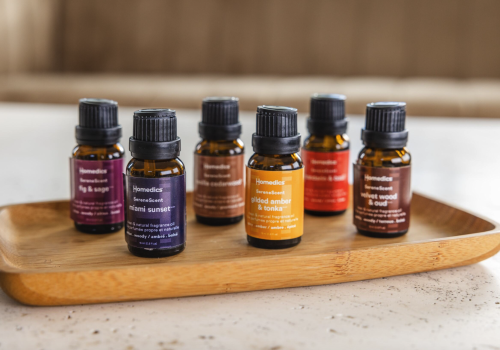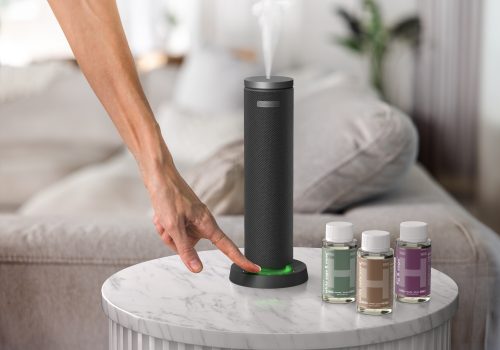Benefits of Deep-Tissue Massage
Some activities and lifestyles put more pressure on muscles, tendons, and ligaments than others. Yet even jobs that require long hours of sitting can leave you feeling soreness or tension throughout your body.
Deep-tissue massage aims to address muscle tension and soreness by loosening stiff muscle fibers and breaking up knots.
Learn more about what deep-tissue massage is, its effects on the body, and what to expect from a deep-tissue massage session.
What Is Deep-Tissue Massage Therapy?
Deep-tissue massage therapy targets muscle tension and soreness and is meant to help loosen knotted connective tissue. In doing so, deep-tissue massage brings multiple research-backed health benefits and a general feeling of relaxation.
A deep-tissue massage involves applying slow, firm pressure to concentrated areas of the body. A massage therapist will apply firm, deeply penetrating pressure with his or her fingers, palms, or elbows.
Deep-tissue massage typically aims to address a specific issue, such as soreness, tension, muscle tightness, or other types of discomfort. You can specify problem areas to be treated or opt for more of a full-body massage experience.
Why Is Deep-Tissue Massage Beneficial?
While some muscles in your body are located close to the skin, others are hidden deep beneath other layers of muscle tissue and connective tissue. It’s these difficult-to-reach muscle fibers that deep-tissue massage targets.
Other massage techniques, such as therapeutic massage and vibration massage, might not be able to penetrate deeply enough to reach deep tissue and loosen the tension that you’re feeling there.
Also called a deep-muscle massage, a deep-tissue massage targets the inner layers of muscle and connective tissue. It aims to break down adhesions—you might’ve heard them called muscle knots—that can be painful and cause tension.
Tissue Adhesions
Adhesions occur when muscle and connective tissue become tight and rigid. Adhesions in the fascia—the soft tissue that connects muscles, organs, bones, and blood vessels—can compress muscles and cause soreness and discomfort, particularly in cases with tight muscles.
Adhesions in the fascia are some of the causes of knotted muscles. In these cases, muscle knots are called trigger points. Relieving and relaxing these trigger points is the goal of a deep-tissue massage.
Deep-Tissue Self-Massage
While a professional deep-tissue massage is about slow, deeply penetrating finger pressure, you can perform a deep-tissue self-massage using a handheld massager. This type of percussion massage device applies rapid, vigorous deeper pressure to the specific point on your skin where you aim it.
That means that the feeling of relaxation and tension relief from a deep-tissue massage is not reserved for expensive professional appointments—you can give yourself a similar feeling at home, at the gym, on the field, or while traveling.
Percussive massage guns can penetrate further into muscles than your fingers can to reach deep layers of muscle fibers where sore muscles or knotted tissue are sometimes located. Some layers of muscle tissue are particularly difficult to reach with your fingers, but a massage gun makes it easier to treat these areas without booking a professional massage.
Massage guns come with several heads that you can use for different body parts and muscle groups. From small muscles in your feet and arms to large chest, back, and shoulder muscles, your personal self-massager can hit the areas where you feel soreness and tension.
What Are the Benefits of Deep-Tissue Massage?

Deep-tissue massage has several valuable benefits as a form of muscle recovery, relaxation, and tension relief.
Increasing Comfort and Bringing Relief
A deep-tissue massage is a relaxing experience for many people. Although it’s a fairly intensive massage technique, it provides soothing relief that can contribute to an overall feeling of relaxation. Receiving a deep-tissue massage (or using a handheld massager to give yourself a deep-tissue massage) gives your body an opportunity to rest and release tension.
In one study, young adults who received massage therapy after exercising showed better circulation than participants who didn’t receive massages. Good circulation helps the body remove waste and transmit nutrients between muscles, organs, and other systems.
Research also shows that deep-tissue massage is an effective way to help alleviate muscle soreness and has positive effects on muscle performance, as well. For people who are on their feet for most of the day or who exercise frequently, deep-tissue massage can be a valuable part of their recovery routines.
Relieving Low Back Pain
A 2007 study found that massage therapy was beneficial for patients with low back pain, especially when combined with exercise.
In addition, the same study showed that massage therapy was beneficial for people with wrist pain, helping reduce discomfort and improve grip strength. For this reason, deep-tissue massage may be beneficial for people whose work involves constant stress on the hands and wrists, such as typists.
Loosening Muscle Knots
Deep-tissue massage often focuses on specific problem areas where you might feel excessive muscle tension or soreness.
Sometimes, these areas of discomfort are the results of muscle adhesions—or knots—that put pressure against other connective tissue. Deep-tissue massage applies targeted pressure to muscle knots to help relieve the tension and allow the fibers to move more freely again.
Increasing Blood Flow
Deep-tissue massage is sometimes used as a form of sports massage and as part of athletes’ recovery process, especially when dealing with injured muscles. A 2014 study showed that massage therapy improved blood flow and helped reduce blood pressure after exercise—a benefit that could influence the flow of nutrients into muscles and waste out of them.
Soothe Tight Foot Muscles
Deep-tissue massage is a common treatment for tight foot muscles. A 2017 analysis found that massage therapy had clean positive effects on foot mobility and, in some patients, reduced foot pain.
Improving Range of Motion
General flexibility and range of motion are important parts of a person’s overall health, helping promote physical activity. Flexible muscles and a good range of motion also contribute to proper posture and good balance.
In a study focusing on shoulder flexibility, deep-tissue massage significantly increased patients’ shoulder range of motion. Improved flexibility and range of motion are valuable benefits of deep-tissue massage therapy.
Deep-Tissue Massage vs. Swedish Massage
Both deep-tissue massage and Swedish massage are common types of massage therapy, although Swedish massage is also known as classic massage due to its widespread popularity.
Swedish massage commonly targets muscles that experience constant stress and tension, such as those in your neck and back. It uses similar strokes to those used by a deep-tissue massage but applies comparatively gentle pressure. A Swedish massage addresses the soft tissue that’s closer to the skin.
While Swedish massage focuses on the surface layers of muscle tissue, deep-tissue massage works deep into muscle fibers that may be hidden beneath other layers of muscle or connective tissue. It also typically targets more specific problem areas, whereas Swedish massage often applies to general areas of the body.
Although a massage therapist will use his or her fingers and palms for both types of massage, a deep-tissue massage therapy session might also involve elbow or forearm pressure for deeper muscle penetration.
Do Deep-Tissue Massages Hurt?
Because a deep-tissue massage works deeply into muscle tissue that might already be sore, you might feel that soreness temporarily as the therapist applies deep pressure to those muscles. However, as the soreness dissipates, you’ll start to feel the relief of loosened muscle fibers and a more relaxed attitude.
You should feel free to talk to the massage therapist and express how you’re feeling during the session. Describing what feels good and what feels uncomfortable will help him or her gauge your pain threshold and find the ideal intensity level for the massage.
You may experience mild soreness for a few days afterward, depending on the intensity and duration of the deep-tissue massage.
Relaxing With Deep-Tissue Massage
Deep-tissue massage offers several benefits for your muscles. By loosening adhesions in muscles and connective tissues, this technique has been shown to help reduce soreness and improve range of motion.
Whether you schedule professional deep-tissue massages or use a handheld massager, you can use a massage therapy session as an opportunity to relax and recharge.
Explore your deep-tissue massage options to find out more about how this massage therapy technique may be beneficial.
Medical Disclaimer: This content is provided for informational purposes only and is not intended to be a substitute for professional medical advice, diagnosis, or treatment.
Sources
Is Deep Tissue Massage Right for You?, Minnesota School of Cosmetology: https://www.msccollege.edu/blogs/massage-therapy/deep-tissue-massage-guide/
Muscle Pain: It May Actually Be Your Fascia, Johns Hopkins Medicine: https://www.hopkinsmedicine.org/health/wellness-and-prevention/muscle-pain-it-may-actually-be-your-fascia
Massage Therapy Restores Peripheral Vascular Function After Exertion, Archives of Physical Medicine and Rehabilitation: https://www.archives-pmr.org/article/S0003-9993%2814%2900130-0/fulltext
Guo, J., Li, L., Gong, Y., Zhu, R., Xu, J., Zou, J., & Chen, X. (2017). Massage Alleviates Delayed Onset Muscle Soreness after Strenuous Exercise: A Systematic Review and Meta-Analysis. Frontiers in physiology, 8, 747. https://doi.org/10.3389/fphys.2017.00747
Jennie C. I. Tsao, “Effectiveness of Massage Therapy for Chronic, Non-Malignant Pain: A Review”, Evidence-Based Complementary and Alternative Medicine, vol. 4, Article ID 416030, 15 pages, 2007. https://doi.org/10.1093/ecam/nel109
Deep Tissue Massage, National University of Health Sciences: https://www.nuhs.edu/patients/health-information/articles/deep-tissue-massage/
Well-Heeled, American Massage Therapy Association: https://www.amtamassage.org/publications/massage-therapy-journal/massage-for-heel-pain/
Fraser, J. J., Corbett, R., Donner, C., & Hertel, J. (2018). Does manual therapy improve pain and function in patients with plantar fasciitis? A systematic review. The Journal of manual & manipulative therapy, 26(2), 55–65. https://doi.org/10.1080/10669817.2017.1322736
Why Good Posture Matters, Harvard Medical School: https://www.health.harvard.edu/staying-healthy/why-good-posture-matters
Yeun Y. R. (2017). Effectiveness of massage therapy on the range of motion of the shoulder: a systematic review and meta-analysis. Journal of physical therapy science, 29(2), 365–369. https://doi.org/10.1589/jpts.29.365





